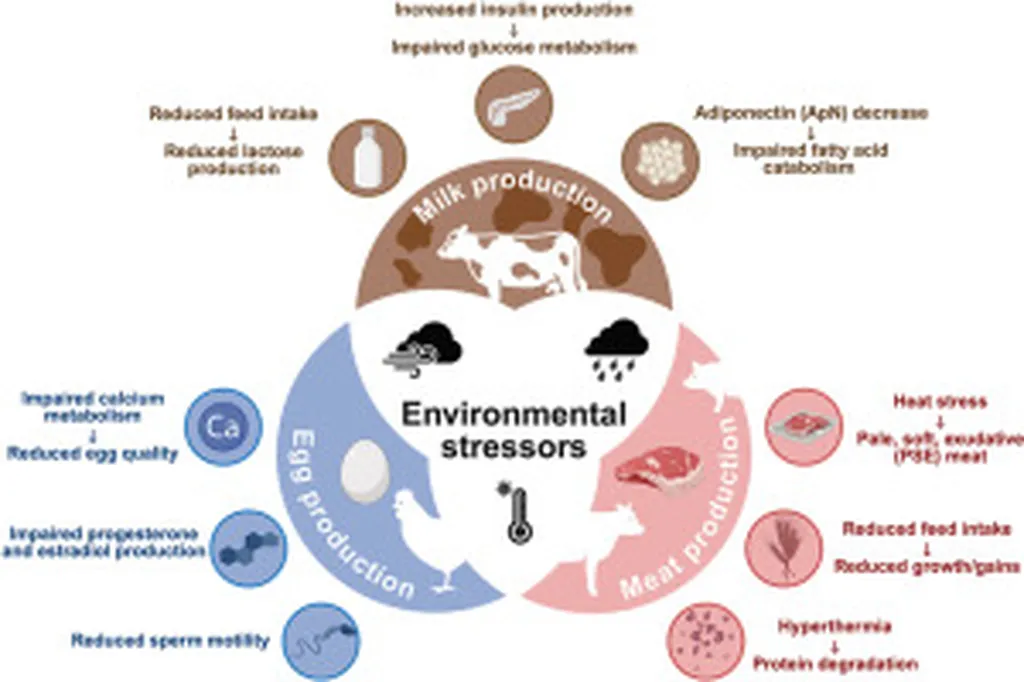In the face of escalating climate change, the livestock sector is grappling with a myriad of environmental stressors that threaten animal health and productivity. A recent interdisciplinary scoping review, published in *Climate Smart Agriculture*, sheds light on the complex interplay between climate change and livestock, offering a comprehensive synthesis that could reshape future adaptation strategies.
The study, led by Alexandru Anuta of the Canadian Centre for Climate Change and Adaptation at the University of Prince Edward Island, integrates insights from animal physiology, biochemistry, and environmental physics to provide a holistic understanding of climate-related stressors on livestock. Unlike previous reviews that often focus on single species or regional case studies, this research takes a broader approach, comparing physiological responses across different livestock species and contrasting various temperature–humidity index (THI) standardization methods.
“Climate change doesn’t discriminate; it affects all livestock, from dairy cows to poultry,” Anuta explains. “By understanding the shared physiological responses to heat stress and other climate-related challenges, we can develop more effective and universal adaptation strategies.”
The review highlights the extensive range of environmental stressors, from increased temperatures to region-specific extreme weather events like dust storms. These stressors can severely impair livestock health and productivity by disrupting homeostasis, ultimately impacting the agricultural sector’s bottom line.
The commercial implications of this research are substantial. As climate change continues to intensify, the livestock sector must adapt to maintain productivity and profitability. The insights provided by this study can guide policymakers, practitioners, and researchers in developing targeted strategies to mitigate the impacts of climate change on livestock.
“Our goal is to provide a valuable resource for anyone in the industry seeking to understand and address the challenges posed by climate change,” Anuta says. “Whether you’re a seasoned researcher or a new policymaker, this synthesis offers a comprehensive overview of the issues at hand.”
The study also identifies a significant research gap—the lack of acknowledgment of the full spectrum of climate stressors affecting livestock. By addressing this gap, the review paves the way for future research and innovation in the field.
As the agricultural sector navigates the complexities of climate change, this interdisciplinary synthesis serves as a crucial tool for developing resilient and sustainable livestock systems. The insights gained from this research could shape future developments, ensuring the sector’s ability to adapt and thrive in the face of a changing climate.

